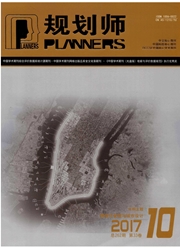
欢迎您!东篱公司
退出

 中文摘要:
中文摘要:
随着我国城市突发灾害的逐渐增多,城市应急避难与防灾减灾规划等工作日益受到重视。在城市内部尤其是城市高密度居住区,如何将避难场所的规划设计同居民在灾害发生时的应急疏散行为结合起来,是一个重要课题。居民是防灾避难规划的服务对象和行为主体,突发灾害条件下人的疏散避难行为选择与综合决策需求应该成为规划的依据和导向。研究从行为学视角出发,剖析了突发灾害条件下居民疏散避难决策行为的相关特性,构建了居民避难场所及疏散路径选择理论模型,其分析结果有助于指导和完善住区防灾减灾规划与设计,以形成合理的避难空间布局及安全、可识别的应急疏散体系。
 英文摘要:
英文摘要:
Urban disaster prevention is being highlighted as city disasters increase. Asylum planning and residents evacuation behavior at emergency is an important issue. The paper analyzes residents' evacuation behavior characters at emergency and establishes asylum and evacuation path model. The study is conducive to community disaster prevention system development and its planning.
 同期刊论文项目
同期刊论文项目
 同项目期刊论文
同项目期刊论文
 Evaluation index system on relationship between urban mass rail transit and its surrounding land use
Evaluation index system on relationship between urban mass rail transit and its surrounding land use 期刊信息
期刊信息
